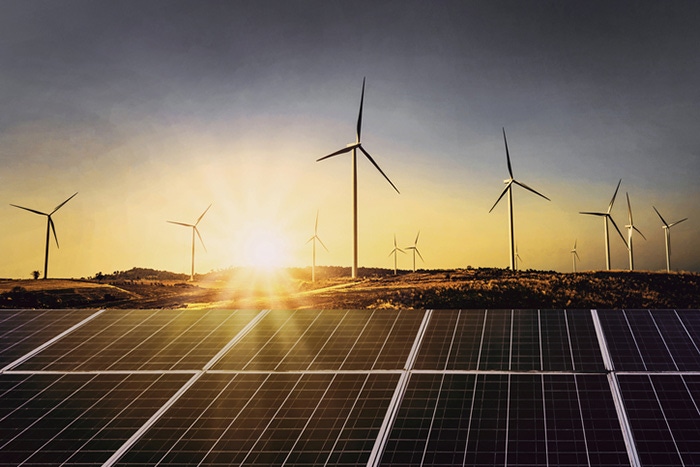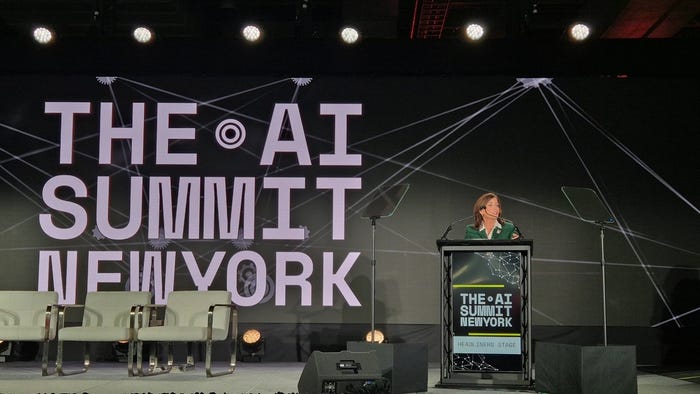IoT Platform for Fighting Climate Change Gains Ground
The German startup Kaiserwetter is expanding the capabilities of its IoT platform targeted at investors.
June 12, 2019

The prospect of “greening” the power grid must be more than a moral imperative. Renewable energy must have financial support.
That conclusion, mixed with a certain amount of curiosity regarding the potential of the Internet of Things, led to the founding of the Hamburg-based Kaiserwetter Energy Asset Management GmbH. The company’s Chief Executive Officer Hanno Schoklitsch determined that to reach the goals of the 2015 Paris climate agreement, renewable energy power generation must first be digitized, which will then help enable potential green power investors and financial institutions better quantify their return on investment while driving transparency and helping reduce risk. “We are helping them make more money,” Schoklitsch said.
Indeed, a transition to renewable energy is underway thanks partly to economics. The cost of green energy technology is falling, making wind and solar energy increasingly competitive compared to unsubsidized nuclear, coal or even natural-gas–based power, according to Lazard, the financial advisory and asset management firm. In 2009, an unsubsidized megawatt-hour cost $135 for wind and $359 for solar. In 2018, the corresponding costs were $42 and $42.
Kaiserwetter, who describes his 2012-founded firm as a “data as a service company,” wants to help accelerate the transition toward green power by using the Internet of Things to help lead to smarter asset management. “In the beginning, we thought: ‘We are not software guys. We have an asset management background,’” explained Schoklitsch, who has a background in civil engineering and real estate. “We started asking what IoT and digital mean for the future of renewable energy.”
The IoT platform Aristoteles centralizes performance-related data from wind and solar farms in the cloud, where it runs machine learning and predictive analytics. The IoT platform also accommodates weather-related data such as wind velocity and cloud cover information, enabling asset managers to project energy output based such weather variables. Users of the service see a traffic-light–based color coding to see which assets are running optimally (shown in green), which could have potential problems (yellow) and which are in trouble (red).
��“You know perfectly which manufacturers work properly, the operation maintenance costs, the opex and things like that,” Schoklitsch said. “We also display the kilowatt-hours, revenues and cash.”
To build a platform for renewable energy portfolio management, Kaiserwetter partnered with SAP, leveraging the company’s Leonardo digital technology as well as its IoT Application Enablement toolkit. The resulting platform, known as Aristoteles, also leverages the SAP cloud.
SAP itself also has a vested interest in green energy, having committed to going carbon neutral by 2025 as well as supporting the 2030-focused United Nations Sustainable Development Goals. “Climate change impacts everyone, right?” said Marcus Wagner, global environmental director at SAP. “There’s no doubt about this, whether it is the weather, water, greenhouse gas emissions and so on.”
To help combat the problem, SAP aims to help its customers improve resource productivity while reducing their carbon output and also aiming to be a sustainability role model. The company’s green focus extends to air travel as well. SAP aims to avoid business flights by investing in virtual collaboration and communication technologies while purchasing carbon emission offsets for the majority of countries in which it does business.
SAP also puts a priority on working with companies with a sustainability focus. “That includes partners like Kaiserwetter as well as helping companies in other industries like in the mobility arena with electric vehicles or carpooling and so on,” Wagner said. “I intend to help clients like Kaiserwetter to see what their business pain points and how we can help them run better. Kaiserwetter is a fantastic client.”
In any event, Kaiserwetter has won a slew of awards. It was named a top asset management solutions provider in 2019 by Utilities Tech Outlook. The company received the SAP Innovation Award in 2018. A year before that, the company won the “Premios Ejecutivos Award” in the “Best Energy Company 2017” category from the Spanish business magazine Ejecutivos.
Kaiserwetter plans to expand the functionality of its software over time, adding variables such as energy market pricing and benchmarking, which will enable users to compare, say, one wind farm in Germany to others across the world.
When asked about the competitive landscape, Schoklitsch said Kaiserwetter has carved out its own niche. “We are still the only one doing this. There are, for sure, other ones coming, but have shown how to add value to our clients as a data service company,” he said.
About the Author
You May Also Like






